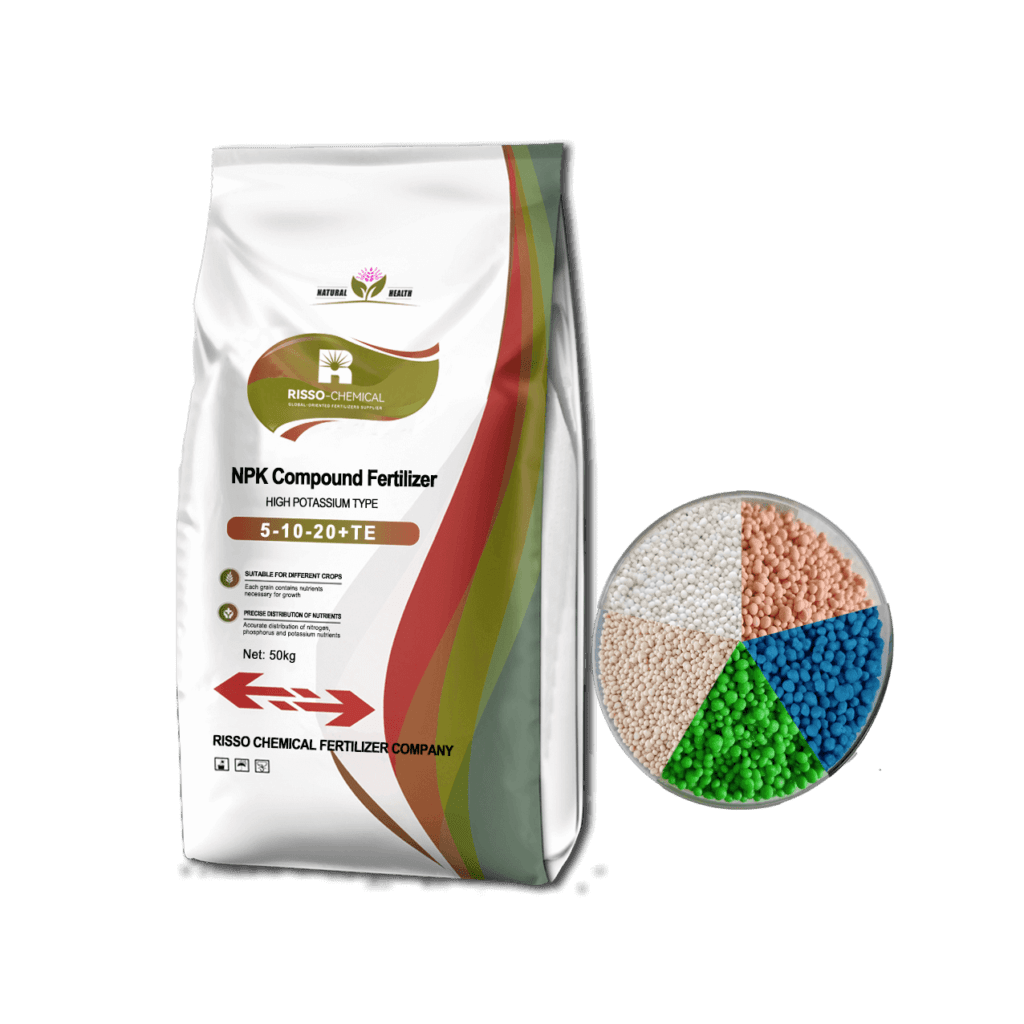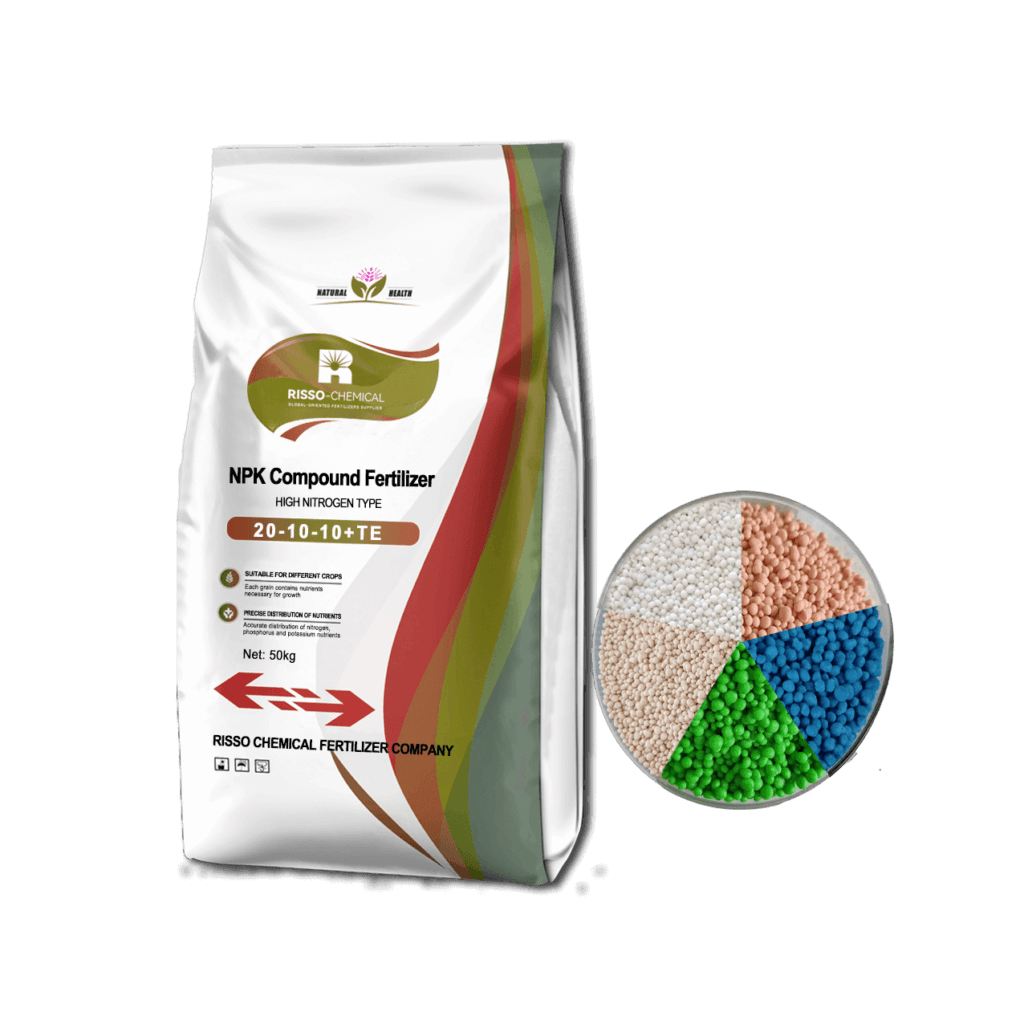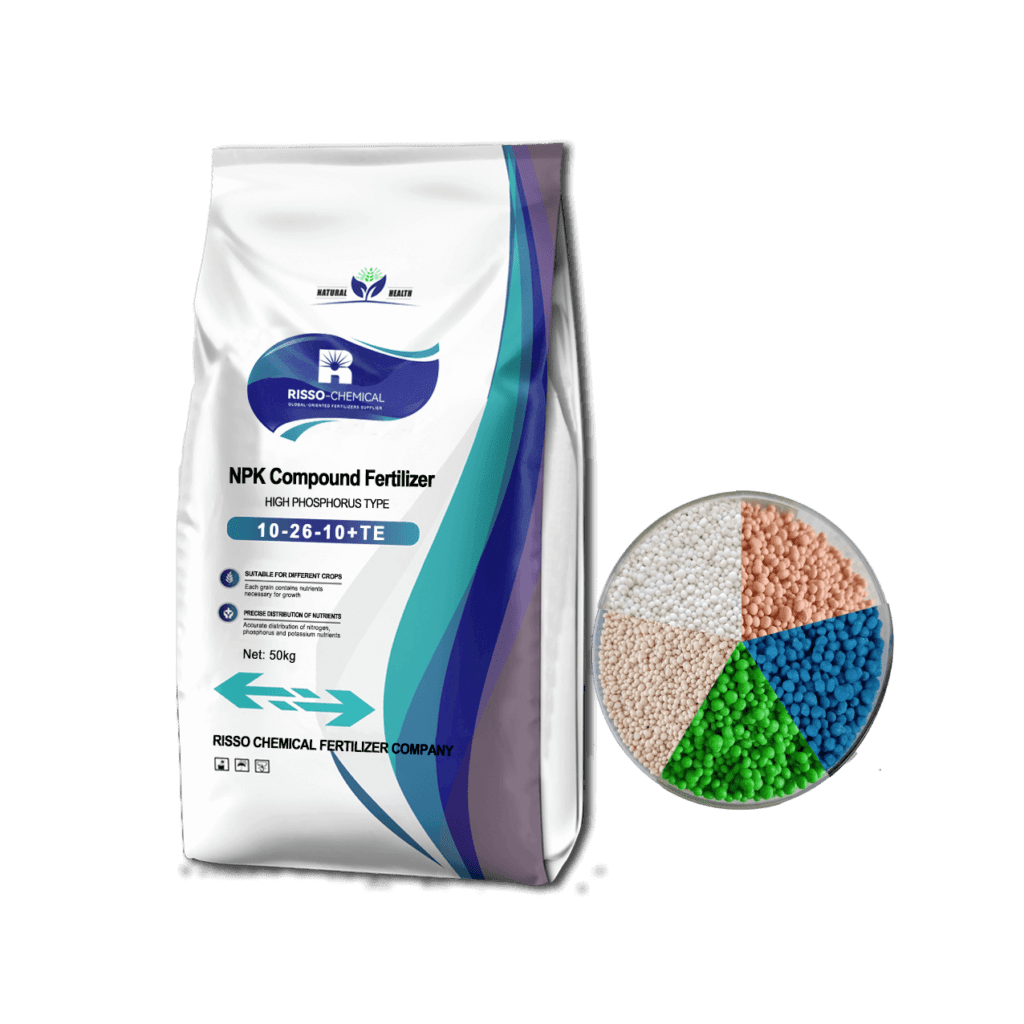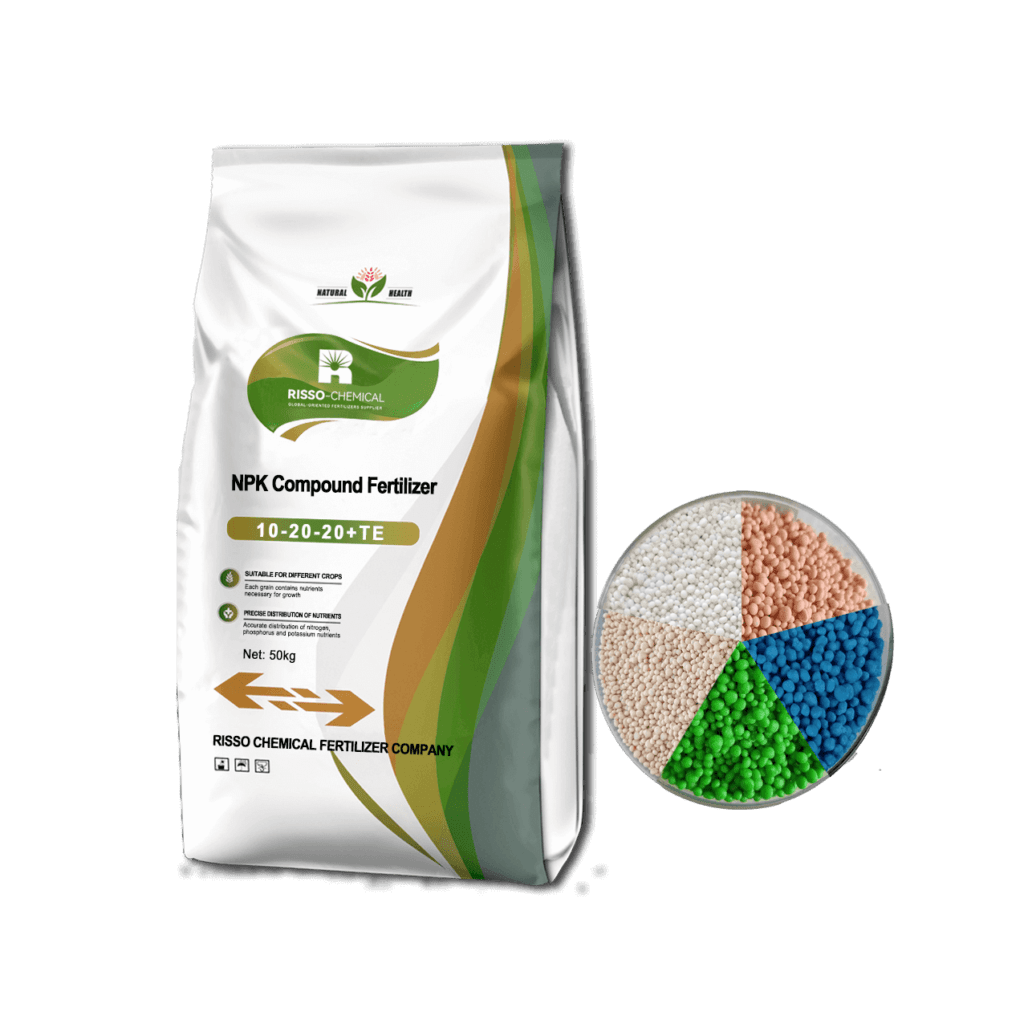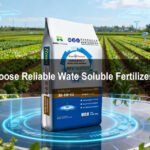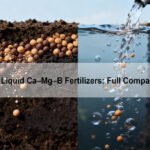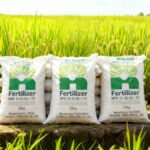Let more growers get greater benefits
When to use NPK fertilizer? A Professional Guide
- Industry News
- December 4, 2016
- 11:42 am
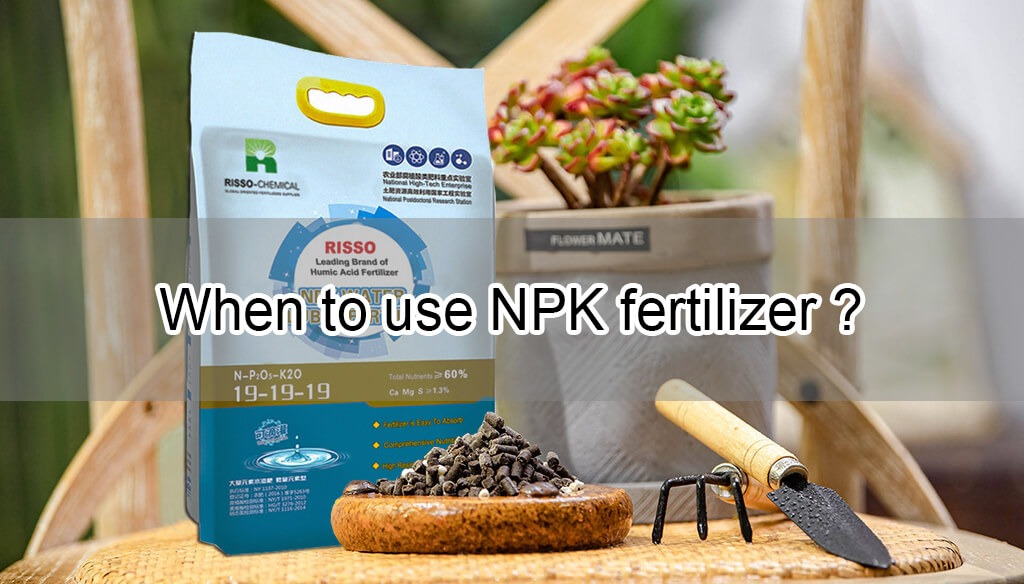

NPK fertilizer is a critical tool in both commercial agriculture and home gardening. The three primary nutrients—Nitrogen (N), Phosphorus (P), and Potassium (K)—are essential for plant growth, development, and productivity. However, timing is crucial when applying NPK fertilizer to ensure plants receive the nutrients they need at the right stages of their growth cycle. This professional guide will explore when to use NPK fertilizer effectively to maximize results. Learn more about how Risso Fertilizers’ premium products can meet your specific needs.
List of Contents
The Components of NPK Fertilizer and Their Role
- Nitrogen (N) – Promotes leaf and stem growth, playing a vital role in photosynthesis and chlorophyll production. It is especially important for plants with high vegetative growth, such as leafy greens, grasses, and cereal crops.
- Phosphorus (P) – Supports root development, flowering, and fruiting. It aids in the transfer of energy and is critical during the early stages of plant growth and reproductive phases.
- Potassium (K) – Improves overall plant health by regulating water uptake, enhancing disease resistance, and supporting fruit and flower quality. Potassium is essential for ensuring strong, healthy plants.
These three elements are foundational for plant growth, and understanding when to prioritize each is key to effective fertilization. Risso Fertilizers offers balanced and specialized NPK formulations, such as 10-52-10, 15-15-15, and 20-20-20, to ensure optimal nutrient delivery across various growth stages.
Key Times to Use NPK Fertilizer
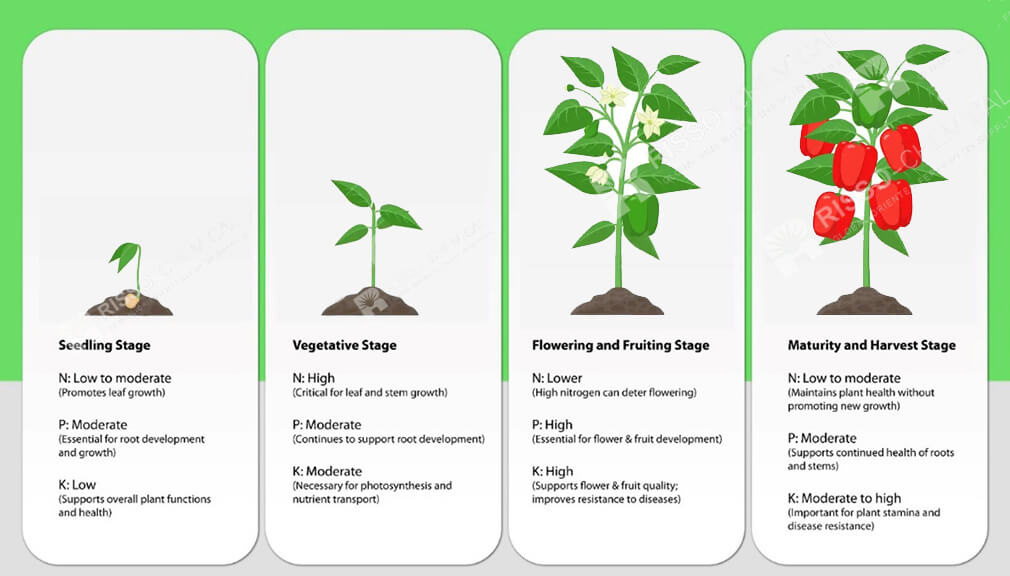

1. Pre-Planting (Soil Preparation)
Before planting, it’s essential to prepare the soil with the right balance of nutrients. This stage requires higher phosphorus levels to promote root development, especially in phosphorus-deficient soils. Pre-planting fertilization ensures that seedlings and young plants have access to phosphorus, which is not as mobile in soil as nitrogen and potassium.
Recommended NPK ratio: Fertilizers with a higher phosphorus content, such as 10-26-10 or similar, are ideal for pre-planting soil enrichment.
Best Time: Apply 2–4 weeks before planting to allow the nutrients to incorporate into the soil.
2. Early Growth (Spring/Early Growing Season)
During the early stages of growth, plants require higher nitrogen levels to support the rapid development of leaves and stems. Nitrogen helps plants grow lush, green foliage and strengthens their overall structure. At this stage, nitrogen is crucial for crops such as cereals, vegetables, and ornamental plants.
Recommended NPK Ratio: A balanced or nitrogen-heavy fertilizer, such as 20-10-10, should be applied during the early growing season.
Best Time: Early spring, just after planting or when the first signs of growth appear.
3. Flowering and Fruiting Stages
When plants enter the reproductive phase—flowering and fruiting—they require more phosphorus and potassium to support flower formation, fruit set, and fruit development. Potassium helps improve fruit quality, while phosphorus is essential for energy transfer and cell division during these stages.
Recommended NPK Ratio: A high-phosphorus, high-potassium blend such as 5-10-10 or 10-20-20 will ensure healthy flowering and fruiting.
Best Time: Begin applying as plants start to flower or when the first signs of fruit development are visible. Fertilize throughout the flowering and fruiting period for continuous nutrient support.
4. Late Growing Season (End of Summer/Fall)
As the growing season winds down, plants begin to focus on root strength and preparing for dormancy in perennials or bulking up their fruits in annual crops. At this stage, nitrogen levels should be reduced to avoid promoting excessive foliage growth, while potassium remains essential for hardiness and disease resistance.
Recommended NPK Ratio: A fertilizer with lower nitrogen and higher potassium content, such as 5-10-20 or 12-10-30, is recommended.
Best Time: Late summer to early fall, as plants prepare for winter or harvest.
5. Post-Harvest (Soil Maintenance)
After harvesting, soil nutrient levels are often depleted. Replenishing the soil with balanced NPK fertilizer ensures that it remains fertile for the next planting cycle. This is especially important in intensive farming or gardening practices where nutrient loss is high.
Recommended NPK Ratio: A balanced fertilizer such as 10-10-10 or 20-20-20 can restore overall nutrient balance.
Best Time: Apply immediately after harvest to replenish the soil for the next growing season.
Special Considerations for NPK Application
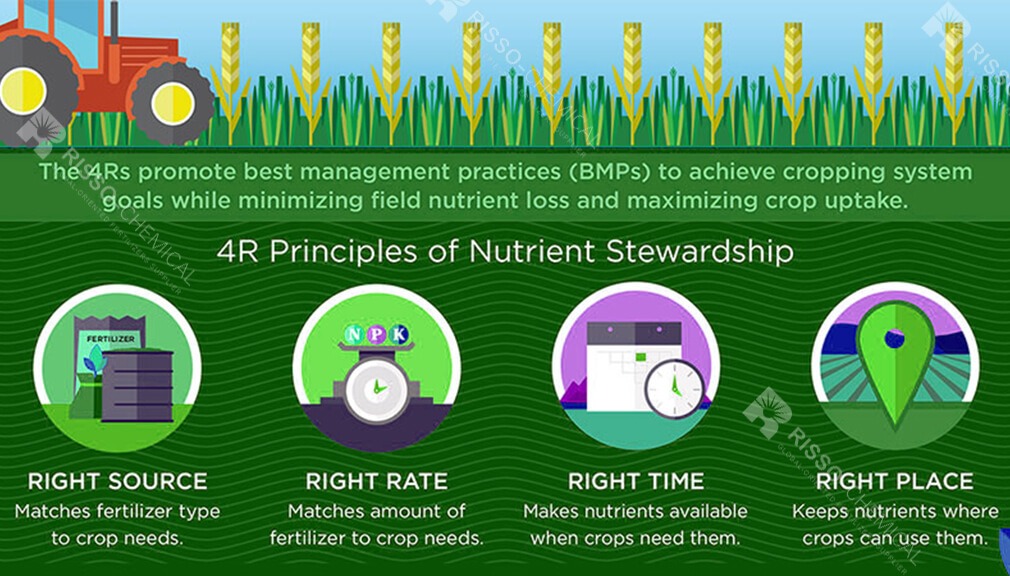

1. Soil Testing
Before applying NPK fertilizer, it’s important to conduct a soil test to determine the existing nutrient levels. Soil tests provide essential information on whether your soil is deficient in nitrogen, phosphorus, or potassium, allowing for more precise fertilization.
2. Plant-Specific Needs
Different plants have varying nutrient requirements throughout their growth cycle. For example, leafy vegetables require more nitrogen, while root vegetables and flowering plants may need more phosphorus and potassium. Tailor your NPK fertilizer application to the specific needs of each plant type for optimal results.
3. Weather Conditions
Weather plays a significant role in fertilizer application. Excessive rainfall can lead to nutrient leaching, particularly nitrogen, which moves quickly through the soil. In contrast, dry conditions may require watering after fertilization to ensure the nutrients reach the root zone.
4. Fertilizer Formulations
Risso Fertilizers’ NPK fertilizers come in a variety of forms, including granular, liquid, and slow-release options. Granular fertilizers are often applied directly to the soil, while liquid fertilizers can be used for foliar feeding or fertigation systems. Slow-release formulations are ideal for long-term nutrient supply, especially in ornamental gardens and landscaping.
Conclusion
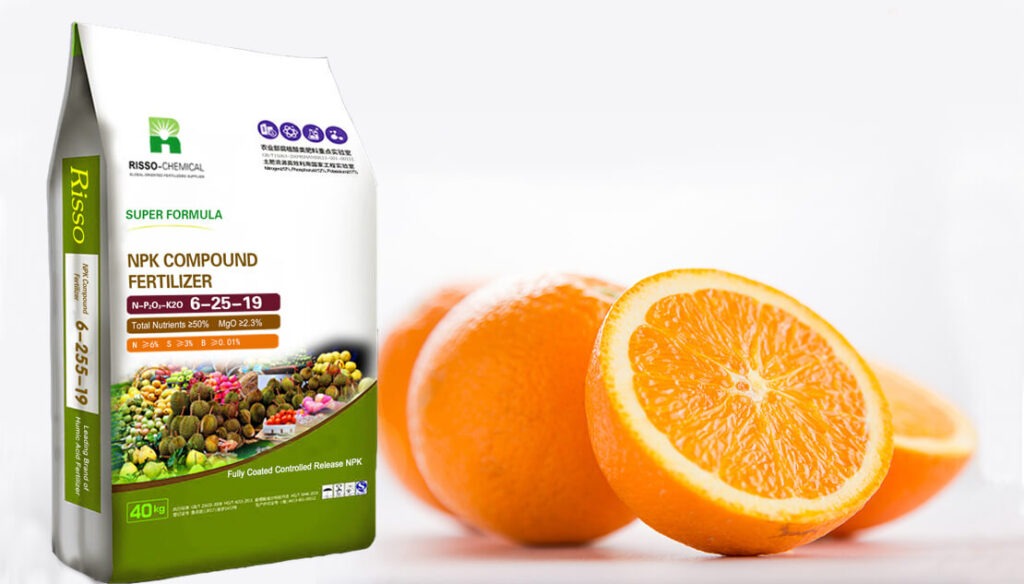

The timing and application of NPK fertilizers are critical components of successful plant management, whether for commercial agriculture or home gardening. By aligning nutrient application with plant growth stages—using products like Risso Fertilizers’ 10-52-10, 15-15-15, and 20-20-20—you can ensure that your plants receive the precise nutrients they require at each stage of development. Soil testing, plant-specific requirements, and environmental considerations should always inform your fertilization strategy for optimal results.
With Risso Fertilizers’ premium range of NPK products, you are equipped to meet the highest standards of plant health and productivity, ensuring the success of your agricultural or horticultural endeavors.
Risso Fertilizers: Committed to excellence in plant nutrition, providing cutting-edge solutions for enhanced growth and yield.
Fertilizer Related Products
If you want to know other questions about When to use NPK fertilizers or NPK fertilizers , please contact us and we will provide professional answers.
- Article
What will you get when touch?
✔ Quick & helpful reply within 6 hours.
✔ Tailored solutions for your project.
✔ One-stop product, tech, market
TRENDING
TAIAN RISSO CHEMICAL FERTILIZER CO.,LTD
- Address: High-tech Development Zone, Taian City, Shandong Province
© Copyright 2017 RISSO CHEMICAL. All Rights Reserved.



